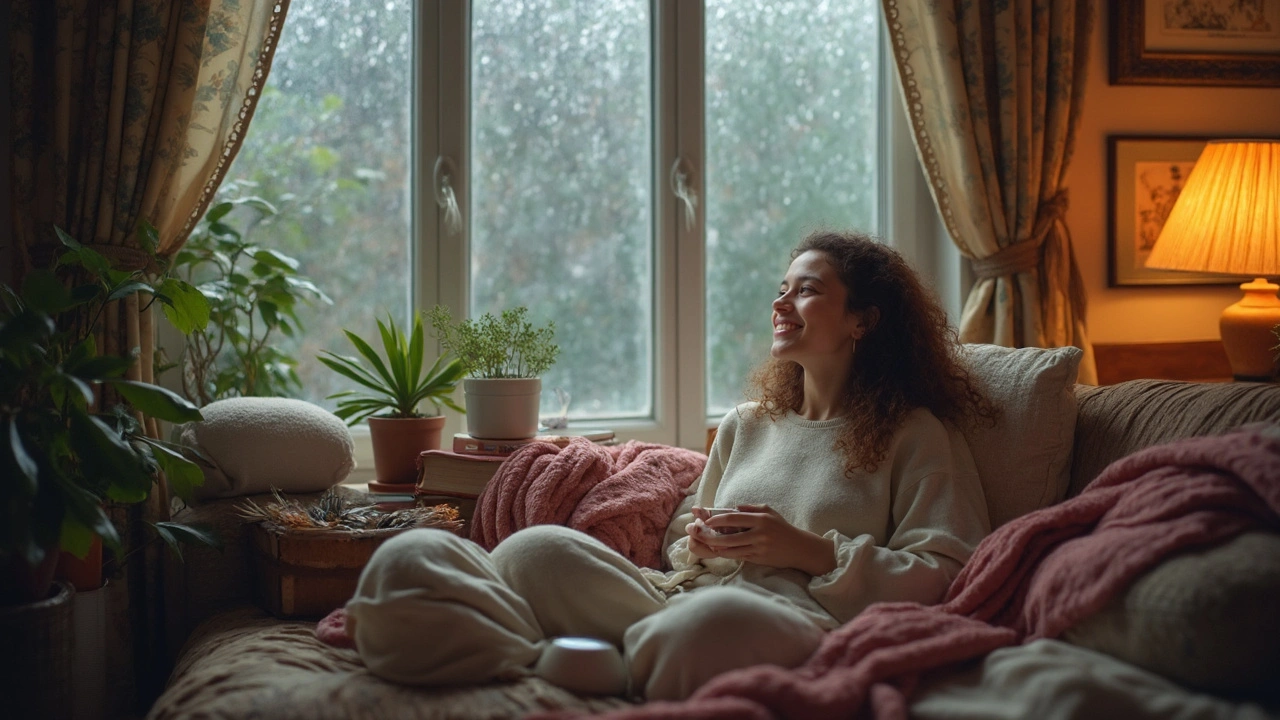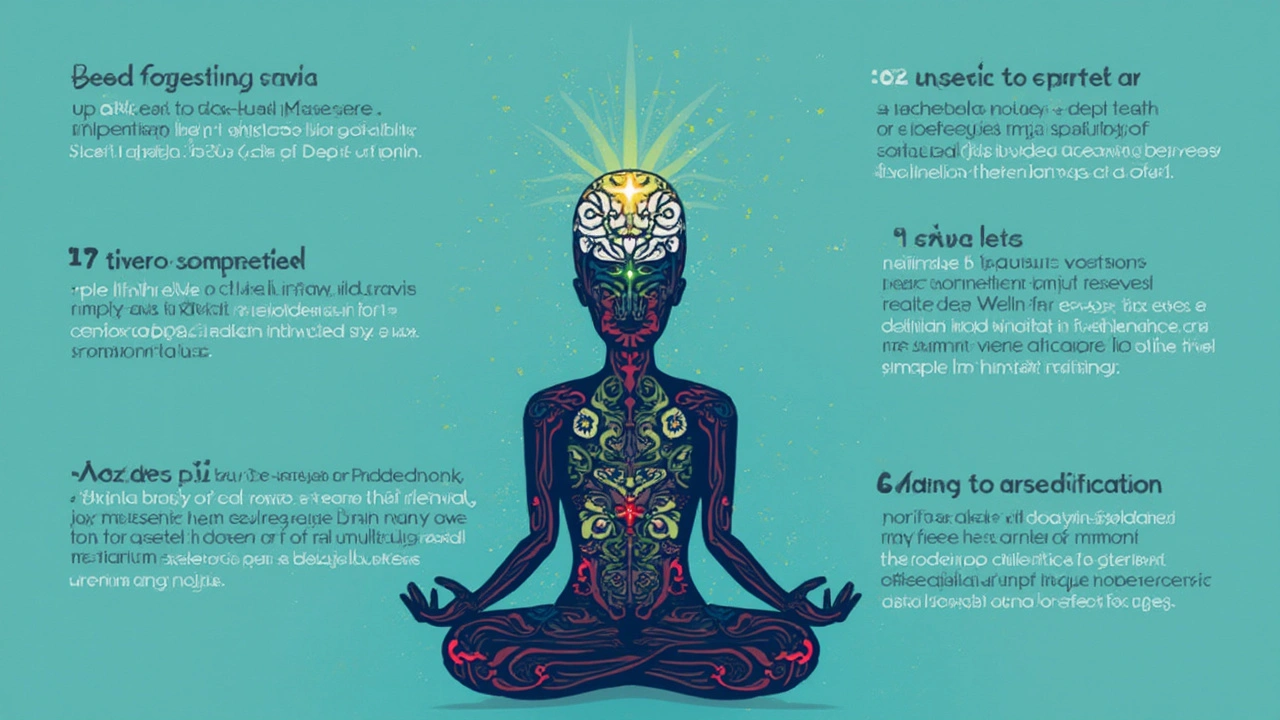You know those days when your mind just won’t slow down? When every little thing feels a bit extra? Meditation runs right into the middle of that chaos like a stubbornly patient friend, quietly doing its magic while everything else just keeps buzzing. But this isn’t some mystical hocus-pocus or a trend that’s going to melt away like last year’s oat milk craze. There’s real science, real numbers, and real stories behind why people sit down, close their eyes, and breathe—sometimes for just five minutes a day—and come out different.
Why Meditation Really Works—The Science and Stories
Let’s jump right in—why does sitting in silence help us heal? This isn’t about chanting by candlelight (unless you want to). It’s about how the brain and body respond when you switch from “go-go-go” to “just breathe.” Way back in 1968, Dr. Herbert Benson’s Harvard team set out to measure what happens when people meditate. Their results? Blood pressure drops, heart rate slows, anxiety chills out. It’s called the ‘relaxation response’—and it’s the opposite of stress. Flip that switch a few times, and the benefits start stacking up, not just for your mood, but for your whole body. Within just two weeks of regular meditation, cortisol—the stress hormone infamous for wrecking sleep and fueling anxiety—drops significantly. People sleeping better is not an accident.
So what’s actually happening under the hood? MRI scans have shown people who meditate regularly thickening parts of the brain tied to attention and emotion regulation. Pull up the work by neuroscientist Sara Lazar at Massachusetts General Hospital—in her 2005 study, she found that eight weeks of mindfulness meditation increased gray matter in areas literally responsible for learning and memory. Feel scatterbrained? Here’s one brain-hack that doesn’t need a plug socket.
Let’s make it practical. Take a deep, belly-filling breath right now. Exhale slowly and actually feel your ribcage move. You just sparked a tug-of-war between your parasympathetic and sympathetic nervous systems—the two that dictate whether you’re in ‘fight or flight’ mode or lounging in ‘rest and digest.’ Meditation calls in reinforcements for your parasympathetic system; that’s why people feel calmer after just five minutes. When practiced over weeks and months, the effects can compound, showing up in lower blood pressure, improved digestion, and even immune system support. A study out of the University of Wisconsin actually tracked cold and flu rates among volunteers—those who meditated over one winter had fewer sick days than people who didn’t.
Now, it’s easy to think this might be “all in your head”—but meditation even helps the body heal from pain and physical illness. Grab the example of Jon Kabat-Zinn’s Mindfulness-Based Stress Reduction (MBSR) program. It’s reshaped how hospitals approach chronic pain and PTSD. In peer-reviewed studies, people in MBSR programs report pain reduction without more meds. Meditation won’t fix a broken leg, but it will change how your brain interprets signals, turning the volume down on discomfort and even boosting feel-good chemicals like dopamine and serotonin.
People often imagine meditation as impossible for anyone who can’t sit still. But researchers found short, accessible meditations—just two or three minutes—shifted mood and stress markers in college students. And, honestly, if it’s good enough to help stressed-out undergrads facing finals, it’s good enough for the rest of us. Meditation’s popularity has boomed during tough times too; a Google search for “guided meditation” hit its all-time high during the first weeks of the 2020 lockdowns. Clearly, it’s not about gurus or incense. It’s about a toolkit to fix what anxiety breaks.

How Meditation Changes Your Life—From Stress to Sleep and Beyond
Stress is nasty. It doesn’t have to wear a neon sign either—it shows up as tight shoulders, jaw clenching, your pulse skipping when work emails ping at midnight. Meditation isn’t some magic spell, but it is a pattern breaker. Harvard’s 2014 study tracked more than 3,500 adults and found mindfulness meditation reduced anxiety, stress, and depressive moods at rates better than some standard medical treatments. When you practice daily, your stress response loses steam. The mind quiets, and the body follows.
You might wonder if this actually helps after a tough day. Let’s talk sleep. Insomnia rates are climbing—especially for women juggling jobs, family, and who knows what else on their mental to-do lists. Meditation helps swap chaos for calm. According to the Sleep Foundation, people who make meditation a part of their bedtime ritual fall asleep faster and stay asleep longer. The trick? Guided breathing or progressive muscle relaxation shifts your nervous system out of its anxious loop, giving your body permission to wind down.
Let’s get super concrete. Meditation doesn’t need any fancy equipment. Here’s a five-step mini guide you can try tonight:
- Find a spot—bed, couch, even your car (parked, please).
- Set a timer for five minutes, so you’re not checking your watch.
- Close your eyes or soften your gaze. Breathe in deeply through your nose, counting to four, then out for four. Repeat.
- If your mind wanders (and it will), just notice it. Gently bring your attention back to your breath, no scolding necessary.
- When your timer chimes, open your eyes. Notice any change in tension or mood.
It honestly is that simple. The power is in the repetition, not perfection. Ten minutes every day is better than an hour once a month. Some people use meditation apps—Headspace and Calm are always trending for a reason. Others prefer YouTube videos or audio tracks. What matters is what works for you and fits your actual life.
Now, if you’re worried meditation is just “sitting and doing nothing,” know this: researchers at Rutgers University tracked brain activity and found people using mindfulness techniques boosted emotional control and reduced reactivity—even during arguments or stressful work meetings. That’s real world grit that stacks up, day after day.
And let’s not ignore the body stuff. Meditation lowers inflammation markers—CRP and IL-6—in the blood. If these sound unfamiliar, they’re the signals that climb when you’re stressed or sick, and are linked to heart disease and diabetes. A big 2016 study tracked more than 1,300 adults; those meditating had healthier inflammation levels months after starting. This makes meditation an ally for anyone eyeing their long-term health, not just their short-term sanity.
Here’s a quick glance at some science-backed data:
| Benefit | Percent Improvement | Study Reference |
|---|---|---|
| Blood Pressure Reduction | 5-10% | Hypertension Research, 2017 |
| Quality of Sleep | Up to 30% | JAMA Internal Medicine, 2015 |
| Decrease in Stress Hormones | 20-25% | Journal of Behavioral Medicine, 2012 |
| Decrease in Anxiety | 25-40% | Harvard Review of Psychiatry, 2014 |
Don’t get hung up on numbers. Everyone’s experience is unique. It’s the daily practice that makes the difference—one breath, one moment at a time.

Real-World Tips: Making Meditation a Habit That Sticks
The trick with meditation isn’t starting. It’s sticking with it. We all know how that goes—the burst of motivation, the fancy journal, and then… life happens. But meditation doesn’t have to be all or nothing. Here are some ways to ease it into your day so it feels like a treat, not another box to tick.
- Attach meditation to an existing daily habit. Maybe it’s right after your morning coffee, during your lunch break, or as the day’s winding down. Piggybacking makes it feel automatic, like brushing your teeth.
- Keep it short at first. There’s zero shame in starting with two-minute sessions. Consistency beats intensity every time. Remember: perfection is not required. In fact, letting go of “doing it right” is half the healing.
- Use reminders. Set a recurring phone alarm or calendar invite. Some folks write ‘Take five’ on their post-its—whatever catches your eye.
- Mix it up. Try guided meditations, nature sounds, or even moving meditations like walking mindfully without your phone. You don’t have to sit cross-legged to get benefits.
Meditation isn’t meant for monks on mountaintops. Busy parents, students, lawyers, healthcare workers—they’re finding ways to use it, on crowded subway seats and noisy kitchens alike. School counselors now teach meditation, and more companies are sneaking breathing breaks into busy meetings. In Miami, a city-wide project brought meditation to local police officers; a year later, those practicing daily saw stress claims drop by 28%.
When tough emotions show up (and they will), meditation can help meet them head-on. Instead of running from anger, sadness, embarrassment, or regret, learning to observe these feelings—like a scientist in your own little lab—means they lose some bite. And over time, self-compassion grows. Not just a nice bonus, but a healing force that actually helps you bounce back from tough stuff.
Don’t fall for the myth that you have to “empty your mind.” The goal is to notice what’s there, and let it come and go without getting tangled up. Over 18 million Americans meditate regularly, proof enough that you don’t have to be a certain type of person for this to work. You only need to be willing to pause, breathe, and start again if you lose track—because you will. That’s the point.
- Struggling to sleep? Try a body scan meditation—listen to an audio that talks you through relaxing each muscle, head to toe.
- Can’t sit still? Try a mindful walk, focusing on every footstep and sound. Dogs, babies, and backpacks welcome.
- Emotionally overwhelmed? Breathe in for four, out for six. Repeat until you feel something shift—a little more space, a little less grip.
The real power of meditation shows up quietly. A clearer head to tackle your job, patience for your family, energy to chase your own goals. That’s how healing begins—not in a single moment, but in each second you choose to pause and turn down the world’s noise.
This is the beauty of meditation. No one else can do it for you, but with the smallest effort, you set off a ripple effect that touches everything: sleep, health, relationships, purpose. The evidence is out there, but so are all those stories from people who’ve genuinely felt life get a little lighter, one breath at a time. Isn’t that what real healing is all about?

